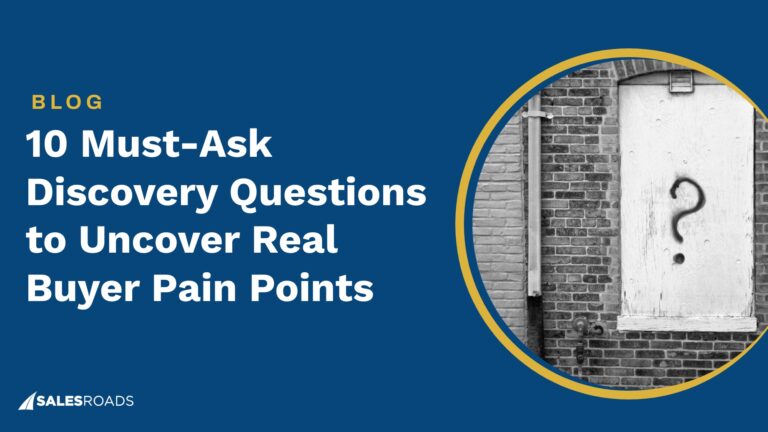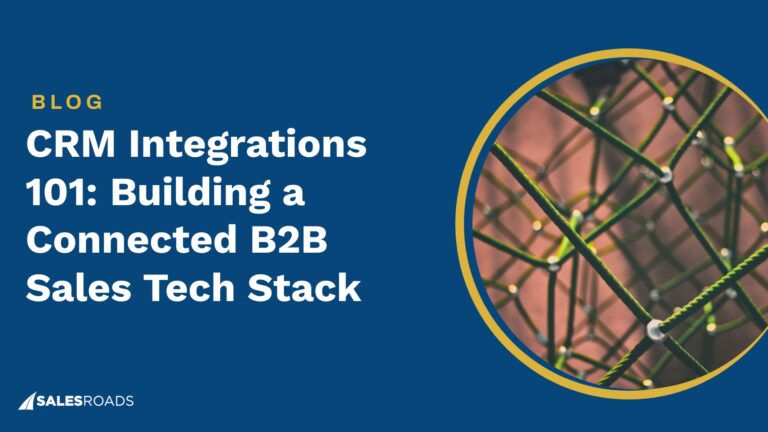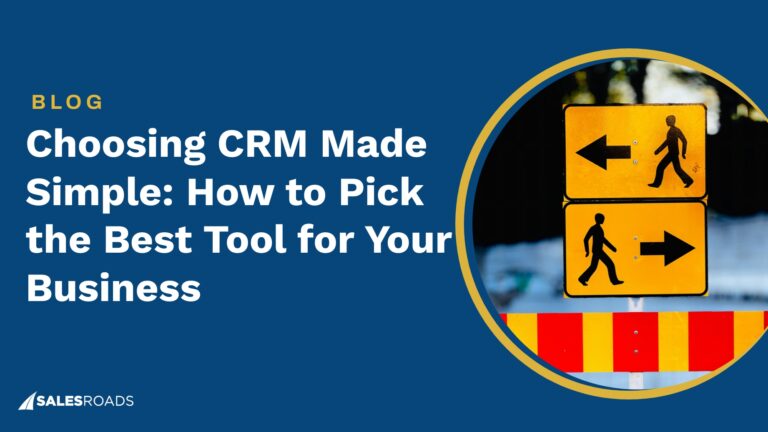Cold calling based on just a name and a phone number isn’t working like it used to. Sales reps are spending hours dialing prospects who don’t even remember getting the email or call, let alone listening to a pitch.
If you want to break through the noise, you need more than a contact list, you need insight.
That’s where B2B market research lead generation comes in. It’s not just about getting the right leads, armed with the right info, so your sales team can actually have meaningful conversations.
When your reps know what tools prospects use, what problems they’re facing, or even how they prefer to talk, everything changes. Suddenly, your outreach feels less like a cold call and more like a helpful conversation.
What Is B2B Market Research Lead Generation?
B2B market research lead generation is a strategy that blends traditional lead generation with targeted market research to help companies create more effective sales conversations.
Rather than focusing solely on collecting basic prospect data like names, email addresses, and phone numbers, this approach emphasizes gathering deeper insights into potential customers before any sales pitch even happens.
Companies use market research lead gen to learn critical details about their prospects such as which tools they currently use, how satisfied they are with their solutions, or what operational challenges they face.
This research-driven lead generation process equips sales teams with actionable intelligence, allowing them to engage prospects with relevant, personalized conversations that resonate.
In fact, a recent State of Customer Service and CX study revealed that 81% of customers prefer companies that offer a personalized experience, something only possible when you have rich, research-backed insights.
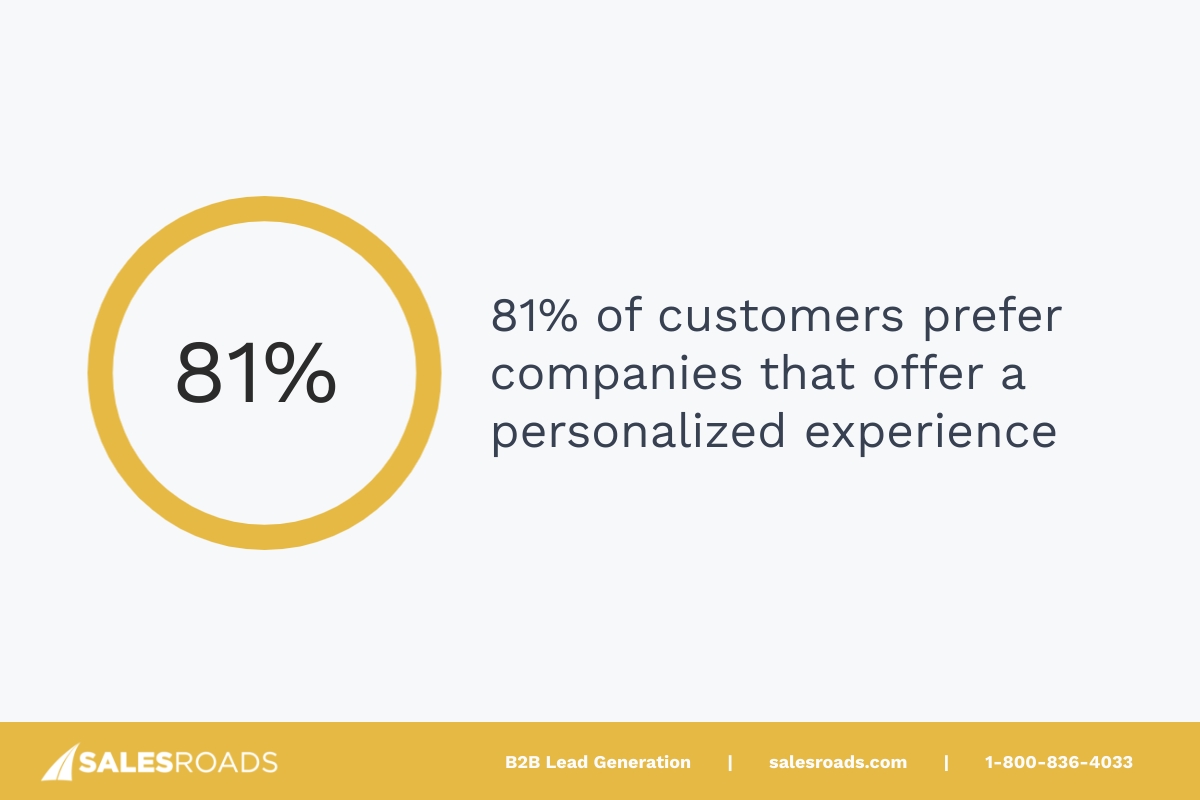
Unlike traditional outreach, where your sales team calls prospects blind, B2B market research lead generation ensures that every lead on your list comes with strategic context.
In short, it’s not about selling, it’s about learning, so that your eventual sales conversations are smarter and more effective.
The Difference Between Traditional Lead Lists and Research-Enriched Leads
In traditional B2B lead generation, companies often build lead lists containing nothing more than contact information: names, job titles, phone numbers, and email addresses. While this information can help a sales team start outreach efforts, it provides little to no context about the actual needs, preferences, or pain points of the prospects.
Research-enriched leads, on the other hand, are built through a combination of market research and lead generation. Instead of just collecting basic contact data, your team gains access to meaningful insights.
Ultimately, the difference comes down to context. B2B market research lead generation transforms anonymous names on a spreadsheet into qualified, insight-driven leads your sales team can confidently pursue.
Why Knowing More Than Just Contact Details Matters in B2B Sales
A lead is never just a name and a phone number. Each prospect represents a real business with specific needs, challenges, and goals. Yet many sales teams approach leads as data points: calling or emailing without knowing anything beyond surface-level contact details.
This limits their ability to connect and sell effectively.
B2B market research lead generation changes that dynamic. Understanding your prospect’s current situation allows your reps to speak their language, address relevant pain points, and offer solutions that actually make sense for their business.
This aligns with buyer expectations as well, 72% of B2B customers expect a deep understanding of their needs before engaging with a sales rep.
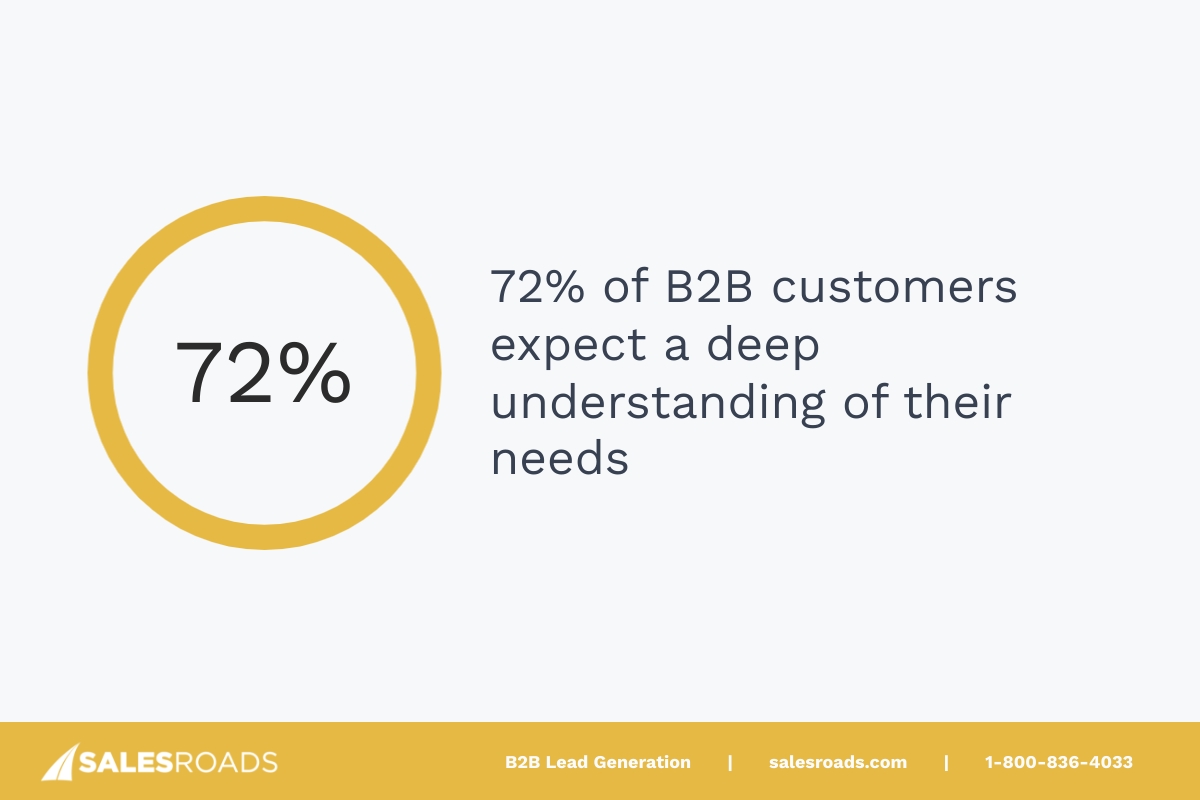
When you come to the table informed, you’re already ahead of the competition.
Sell Solutions, Not Guesses
Too often, traditional B2B lead generation produces a list of potential customers with no real understanding of their current systems or challenges. Sales reps are forced to guess, hoping their sales pitch resonates or blindly asking prospects what they’re using today.
With market research lead generation, sales teams don’t have to guess. They know in advance what software the prospect uses, whether they’re satisfied with it, and which pain points they’ve shared in earlier research calls.
This allows reps to shape their message around what they know matters.
Building Trust from the First Real Conversation
First impressions count. A prospect can tell when a rep is working from a script versus when they’ve done their homework. By leveraging insights from market research lead generation, your sales team enters the conversation informed and prepared.
When a prospect hears that you understand their current tools, their business environment, and even some of their frustrations, they’re more likely to feel understood and valued.
This creates trust faster because your rep isn’t making assumptions or asking basic discovery questions the prospect has answered before.
Starting conversations with relevant insights shortens the trust-building process. Prospects are more open, sales conversations move forward more naturally, and your team has a stronger foundation for closing the deal.
How Market Research Calls Work Behind the Scenes
At first glance, B2B market research lead generation may sound like just another data collection tactic. In reality, it’s a strategic process designed to equip sales teams with real, actionable insights.
Whether handled by an internal team or an outsourced partner, these market research calls operate very differently from typical sales outreach.
Instead of calling prospects to pitch a product, dedicated researchers or reps conduct non-sales conversations that feel more like surveys or casual interviews. The goal isn’t to sell but to learn. These calls are designed to gather specific information about the prospect’s current systems, satisfaction levels, pain points, and operational preferences.
The prospects don’t feel pressured, and the conversations stay focused on understanding, not convincing.
This process creates significant value for your sales team. By the time your reps contact the prospect, they’re armed with meaningful context, allowing them to craft messages that resonate and avoid wasting time on irrelevant angles.
Types of Strategic Insights You Can Gather
During these research-focused calls, the questions asked are simple but strategic and, most importantly, tailored to your company’s unique goals and sales approach. There’s no universal script, because the insights your sales team needs depend entirely on what you’re selling and how you position your solution.
If your product is software, your team might need to understand what tools prospects are currently using. But if you’re selling consulting services, your questions could focus on internal processes, current challenges, or decision-making structures.
Examples of insights companies may choose to gather include:
- What systems, processes, or tools are currently in place (when relevant)
- Key operational challenges or roadblocks
- Buying cycles or project timelines
- Decision-maker roles and approval processes
- Strategic priorities for the upcoming quarter or year
- Satisfaction or dissatisfaction with any current solution, if applicable
- Preferences for communication style or outreach timing
These aren’t sales questions; they’re strategic discovery questions aligned to your business objectives. When planned thoughtfully, this research process uncovers insights that help your sales team move away from generic pitches and instead lead with relevance and value.
Listening to Call Recordings for Tone and Behavioral Clues
In addition to the data gathered from research calls, companies can leverage call recordings to learn valuable qualitative insights.
Listening to these recordings allows your sales team to pick up on tone, mood, and even personality traits, subtle cues that can influence future conversations.
For instance, if a prospect sounded upbeat and conversational, your sales rep might choose a more casual, friendly tone when reaching out. On the other hand, if the prospect seemed rushed or serious, your team knows to be direct and to-the-point.
Reps might also notice environmental factors, like loud background noise, that suggest the prospect is often busy or on the move, helping them time their outreach more effectively.
These behavioral and tonal clues help humanize your prospects. Rather than treating them as anonymous buyers, your team can approach them as real people, making conversations more natural and relationship-driven.
In this way, B2B market research lead generation doesn’t just deliver data; it delivers context, tone, and human insights that improve every step of your sales process.
How to Implement This Approach Without Overhauling Your Sales Team
Adopting a B2B market research lead generation strategy doesn’t mean you need to completely restructure your sales organization. However, it’s important to recognize that layering this research phase into your lead generation process requires planning, time, and resources.
Companies that choose to handle this internally must be ready to hire, train, and manage a dedicated team responsible for conducting non-sales discovery calls. This step happens before your sales team ever picks up the phone to pitch.
Building this capability in-house can be valuable but isn’t always practical. Beyond the added payroll costs or training staff to run effective research calls, layering this function into your process requires careful coordination between research teams and your SDRs to ensure insights are shared effectively.
For many organizations, especially those focused on scaling quickly, adding this research layer internally slows down outbound efforts. However, that doesn’t mean this strategy is out of reach.
Use Sales Outsourcing Partners That Offer This as a Service
Rather than building an internal market research team from scratch, companies can work with sales outsourcing partners that specialize in market research lead generation.
These partners handle the first layer of prospect research on your behalf, freeing your sales reps to focus on what they do best: selling.
With a sales outsourcing partner, your team receives leads backed by detailed insights and real-world conversations, not just a spreadsheet of contacts.
You’ll get:
- Enriched lead lists containing key information (tech stack, pain points, satisfaction levels, etc.)
- Call recordings from the conversations, providing tone and behavioral context
- Actionable data your reps can use to personalize outreach immediately
By outsourcing this first layer, your company can implement a B2B market research lead generation strategy without slowing down internal teams or overcomplicating your sales process.
Your reps start every call with a handful of data and a strategic advantage.
Bottom Line
Here’s the truth: selling without context is like shooting in the dark. If your reps don’t know enough about the prospect before the first call, they’re just hoping for a lucky break.
Market research lead generation flips that script. It puts real insights in your reps’ hands so they can skip the awkward small talk and get straight to solving problems that matter. That’s how you win trust fast—and close deals faster.
If you want your sales team to stop wasting time guessing and start having smarter, more confident conversations, it’s time to invest in smarter lead generation.





